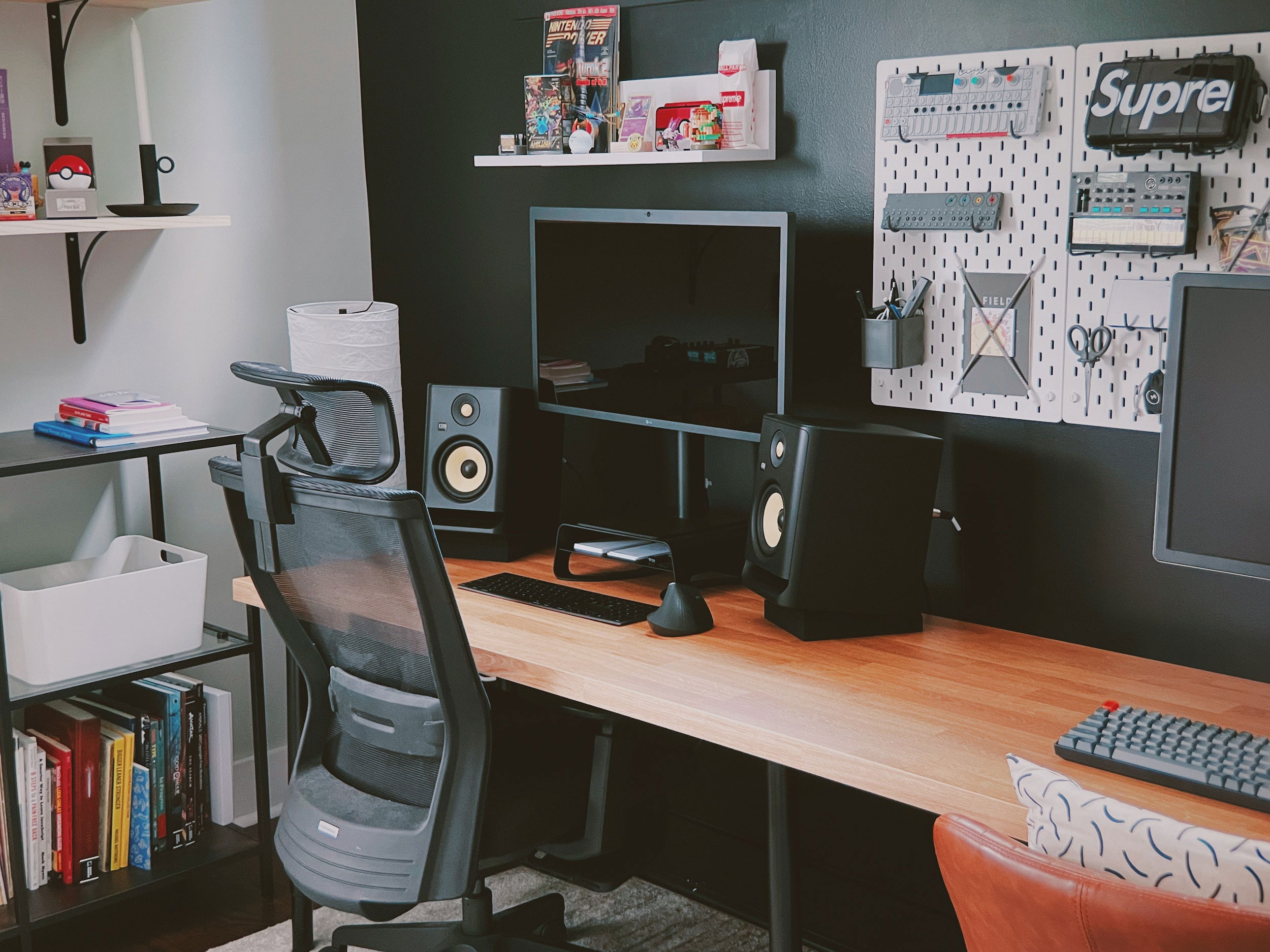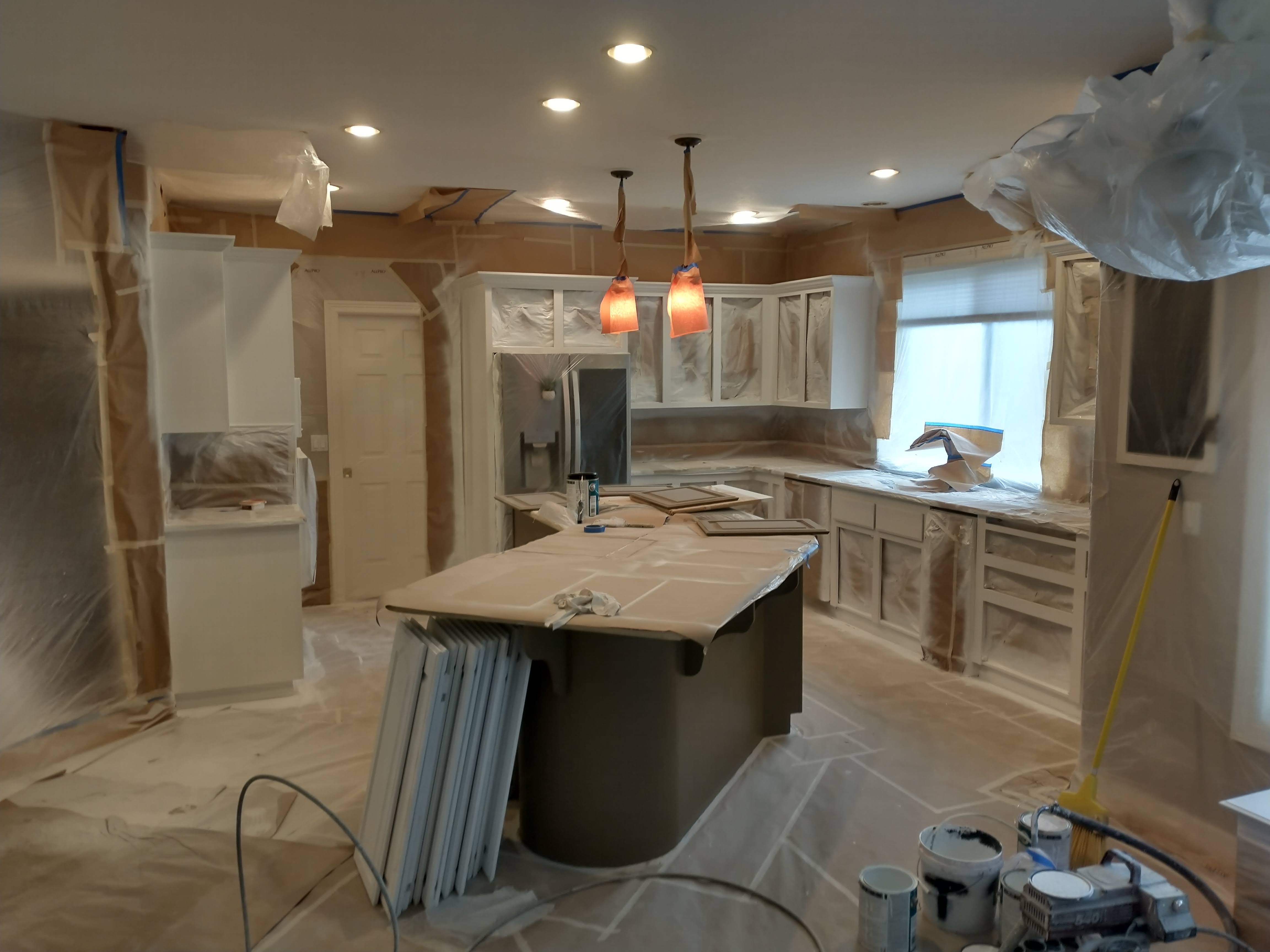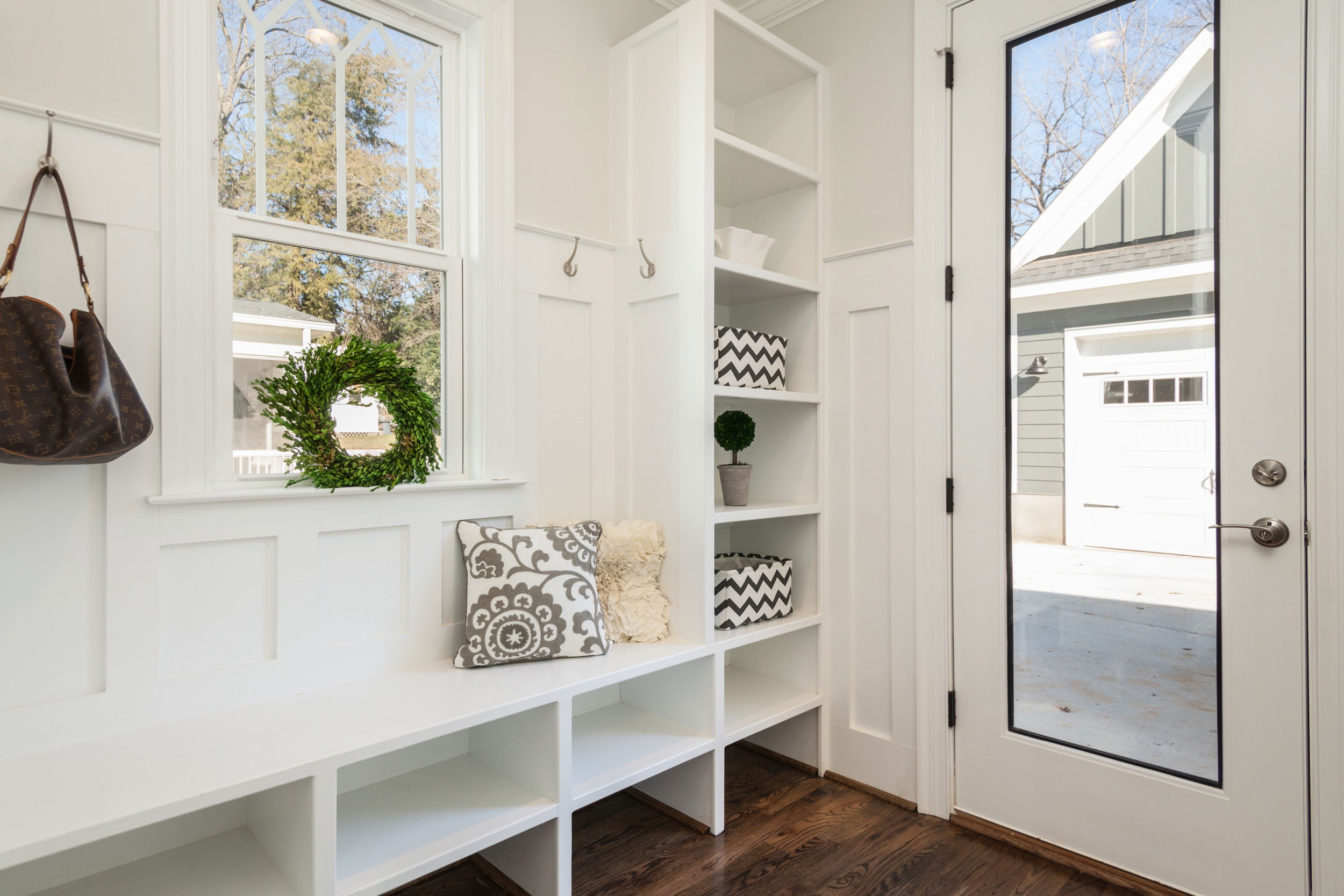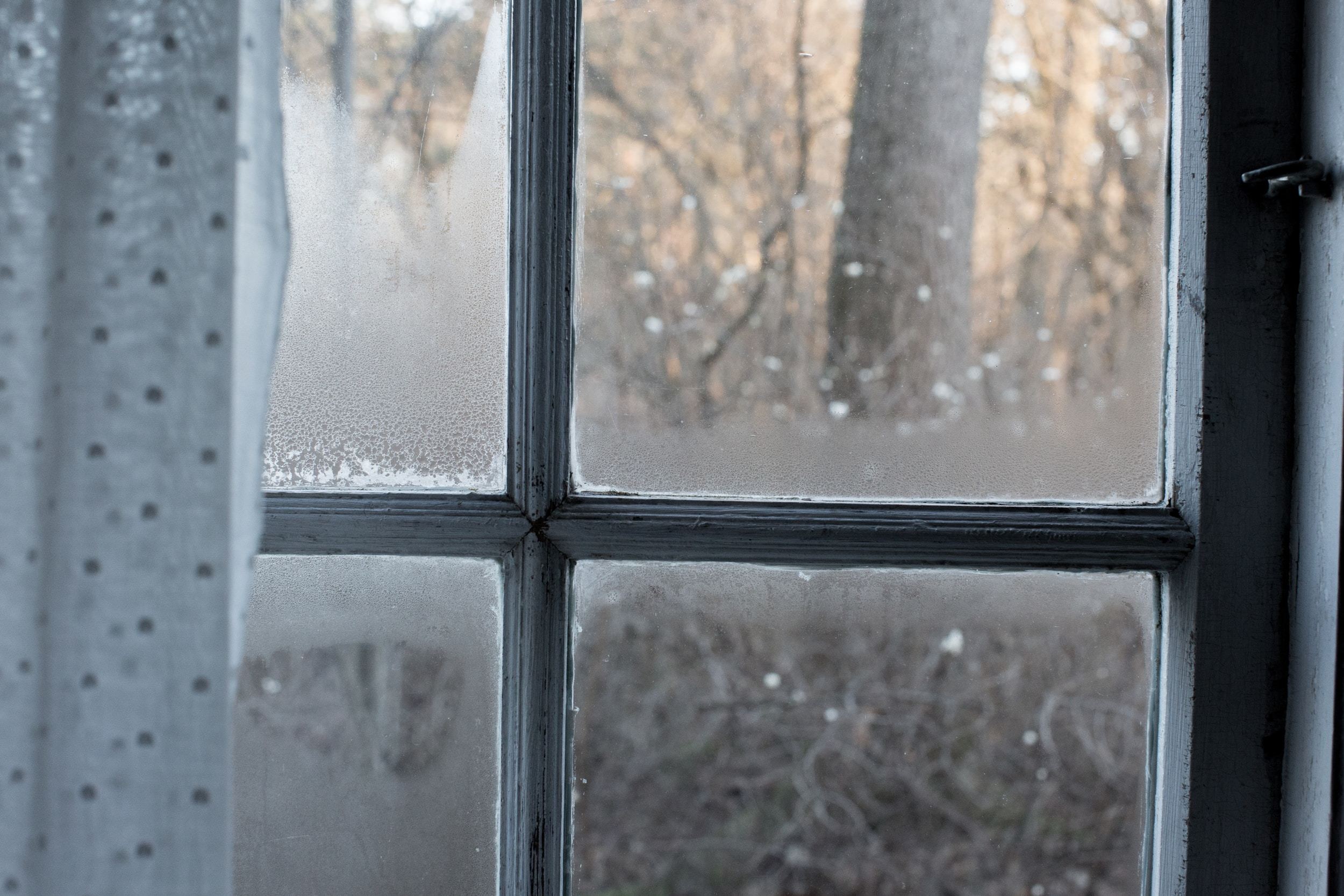10 Must-Try Handyman Projects for Home Improvement: Transform Your Space

Painting/Handyman Projects for Home Improvement
Welcome to the vibrant world of home transformation, where a splash of creativity and a bit of elbow grease can turn your living space into a masterpiece! I’m thrilled to guide you through "10 Must-Try Handyman Projects for Home Improvement." Whether you're a DIY novice or a seasoned pro, these projects, inspired by the craftsmanship of Lightmen Painting, are sure to infuse your home with freshness and style.
"I tried painting an accent wall last weekend. I told it, "You're going to be the center of attention!" The wall didn't reply – it's such a paint in the butt!"
1. Accent Wall Creation
Creating an accent wall is a game-changer for any room. It's about more than just painting – it's about making a statement. Choose a bold, contrasting color to stand out against your other walls. Consider using a matte or glossy finish depending on the desired effect. For a truly unique touch, think about adding a stencil design or a geometric pattern. Remember, the accent wall should reflect your personal style and tie the room together.
- Choosing the Right Wall: The first step is selecting the appropriate wall to accentuate. Typically, the best choice is a wall that naturally draws the eye when entering the room, such as the one behind a television, sofa, or bed. Avoid walls with too many windows or doors, as they can detract from the impact.
- Selecting a Color: The color choice is crucial in setting the mood of the room. Bold and contrasting colors can create a striking effect, making the room feel dynamic and lively. For a more subtle approach, choose a color that is a few shades darker than the other walls. Consider the existing colors in your room, including furniture and decor, to ensure cohesion.
- Finish Matters: The finish of the paint can dramatically alter the appearance of your accent wall. A matte finish can provide a modern, sophisticated look, while a glossy finish can make the color pop and add vibrancy. Your choice should align with the overall ambiance you wish to achieve.
- Adding Patterns or Textures: For an added layer of uniqueness, incorporate patterns or textures. Stencils are a great way to add a design element to your wall, ranging from subtle motifs to bold geometric patterns. Textured paints or techniques like sponging, rag rolling, or brushing can add depth and interest.
- Incorporating Art or Shelving: Accent walls also provide a perfect backdrop for artwork or shelving. Hanging striking art pieces or installing shelves for books and decorative items can enhance the wall's impact.
- Preparation and Execution: Proper preparation is key. Clean the wall, repair any holes or cracks, and apply a primer if necessary. When painting, use quality brushes or rollers for an even coat. If you're not confident in your painting skills, consider hiring a professional for a flawless finish.
- Lighting Considerations: Lighting can significantly affect the appearance of your accent wall. Consider installing accent lighting, like wall sconces or directional lights, to highlight the wall and make it a true centerpiece.
- Harmonizing with Room Decor: Finally, ensure your accent wall harmonizes with the rest of the room's decor. It should act as a complement, not a distraction. The colors and patterns should tie together the room's overall theme and style.
2. Cabinet Refinishing
Revitalizing your cabinets can completely change the look and feel of your kitchen or bathroom. Start by removing the doors and hardware. Clean all surfaces thoroughly and sand them down to ensure the new paint adheres properly. Consider using a high-quality, durable paint in a modern hue to give your cabinets a fresh, new look. Don't forget to update the hardware for an extra pop of style!
- Preparation Stage:
- Remove Doors and Hardware: Begin by carefully removing the cabinet doors, drawers, and all hardware like handles and hinges. This step is crucial for a thorough and even painting job.
- Labeling: It's a good practice to label each door and drawer (and their corresponding locations) with painter's tape. This will make reassembly much easier.
- Cleaning and Sanding:
- Cleaning: Use a degreasing agent or a mixture of warm water and mild detergent to thoroughly clean all surfaces. This step is vital to remove grease, dust, and grime that accumulate over time.
- Sanding: After cleaning, sand all surfaces with a medium to fine-grit sandpaper. Sanding helps in removing the glossy finish and creates a rougher surface for the new paint to adhere to. Wipe down the surfaces after sanding to remove any dust.
- Choosing the Right Paint:
- Quality and Type: Opt for a high-quality, durable paint that's suitable for cabinetry. Acrylic, latex, or oil-based paints are commonly used for cabinets. Consider a semi-gloss or gloss finish as they are easier to clean and more durable.
- Color Selection: Choose a color that complements the overall color scheme of your kitchen or bathroom. Modern hues can give a contemporary look, while classic shades offer a timeless appeal.
- Priming:
- Apply a primer before painting. This is especially important if your cabinets are made from a porous material like wood or if you're transitioning from a dark to a light color. Primer ensures better adhesion of paint and increases paint durability.
- Painting Process:
- Use a brush or a roller to apply paint. For a smoother finish, consider using a paint sprayer, but be mindful of overspray.
- Apply multiple thin coats of paint rather than a single thick coat. Allow adequate drying time between coats.
- Hardware Update:
- Updating the hardware (handles, knobs, pulls) can significantly enhance the overall look. Choose styles that match the new aesthetic of your cabinets.
- Reassembly:
- Once the paint is completely dry, carefully reattach the doors, drawers, and new hardware. Refer to your labels to ensure everything goes back to its original place.
- Maintenance:
- Proper maintenance is key to keeping your refreshed cabinets looking great. Regular cleaning with a soft cloth and mild cleaner will help maintain their new appearance.
3. Custom Shelving Installation
Custom shelving isn’t just practical; it’s a chance to display your personality. Whether you choose a sleek, modern design or a rustic, reclaimed wood look, your shelves should reflect your style. Consider the weight they’ll need to support and ensure proper anchoring into wall studs. This project not only adds storage but also serves as a display space for your favorite books, plants, or collectibles. Installing custom shelving merges functionality with personal expression.
- Design and Planning:
- Style Selection: Decide on the style of the shelving that best reflects your personality and suits your space. This could range from sleek, floating shelves to chunky, reclaimed wood ones.
- Purpose and Location: Determine the purpose of your shelves (e.g., book storage, display pieces, kitchen supplies) and the best location for them in your home. Consider factors like natural light, room traffic, and wall space.
- Material Selection:
- Choose materials that not only match the style you’re going for but are also durable and suitable for the items you plan to store. Options include solid wood, MDF (medium-density fiberboard), metal, or glass.
- Weight Considerations:
- Assess the weight capacity required for your shelving. Heavier items will need sturdier materials and more robust support systems.
- Measuring and Marking:
- Measure the area where you will install the shelves. Ensure that you have accurate measurements for height, width, and depth.
- Use a level and pencil to mark where your shelves will go, keeping in mind both aesthetic placement and practical use.
- Anchoring and Installation:
- Identify wall studs using a stud finder, as securing the shelves into studs will provide greater stability.
- If wall studs aren’t available in your desired location, use appropriate wall anchors that can support the weight of the shelves and their contents.
- Install the brackets or mounting hardware according to the manufacturer’s instructions, ensuring they are level and securely attached.
- Shelf Placement:
- Place the shelves onto the brackets or directly onto the wall mounts. Ensure they are secure and level.
- For adjustable shelving systems, consider the spacing between shelves based on what you intend to place on them.
- Personalization and Decoration:
- Once your shelves are installed, it’s time to add your personal touch. Arrange your books, plants, collectibles, or other items in a way that’s both aesthetically pleasing and functional.
- Consider the balance and symmetry of the items on the shelves, and feel free to rearrange until you find the perfect layout.
- Maintenance:
- Regularly check the stability and security of the shelves, especially if they hold heavy items.
- Keep the shelves clean and dust-free to maintain their appearance and the longevity of both the shelves and the items displayed on them.
4. Door Makeover
A door makeover can dramatically enhance both your home’s interior and curb appeal. For exterior doors, consider bold, welcoming colors that complement your home's exterior. For interior doors, a fresh coat of paint in a contemporary shade can modernize your space. Pay attention to the details: a smooth finish, clean edges, and updated hardware can make all the difference.
- Choosing the Right Paint:
- Exterior Doors: Select bold, inviting colors that complement your home's exterior style and color palette. Outdoor paint should be durable and weather-resistant.
- Interior Doors: Opt for a contemporary shade that enhances the interior décor. Interior paints should be easy to clean and resistant to wear.
- Preparation and Cleaning:
- Remove the door from its hinges and remove all hardware (handles, knobs, locks).
- Clean the door thoroughly to remove dirt, grease, and any old paint flakes. This might involve mild detergent, a scraper, and sandpaper.
- Sanding and Priming:
- Sand the door surface lightly to create a smooth base for the new paint. This helps in achieving an even and professional-looking finish.
- Apply a primer, especially if you’re making a drastic color change or if the door is made of bare wood or metal. Primer ensures better adhesion of the paint and increases its durability.
- Painting Techniques:
- For a smooth finish, use a high-quality brush or a foam roller. Brushes are great for paneled doors, allowing you to get into the grooves and details.
- Apply paint in thin, even layers. Multiple light coats are preferable to a single thick coat. Allow adequate drying time between coats.
- Adding Details and Finishing Touches:
- Consider special paint effects for added character, like a faux wood finish or distressing for a rustic look.
- Ensure the edges and corners are neat and clean.
- Hardware Update:
- Updating the door hardware (knobs, handles, locks) can significantly enhance the door’s new look. Choose hardware that complements both the door's style and the overall theme of the room or house exterior.
- Reinstallation and Maintenance:
- Once the paint is completely dry, reattach the hardware and reinstall the door.
- For exterior doors, check periodically for chips or wear, and touch up as needed to maintain the door’s appearance and protection.
- Considerations for Different Door Materials:
- If your door is made of wood, metal, or fiberglass, the preparation and painting process might vary slightly. For example, metal doors may require rust treatment, and wood doors might need more extensive sanding and sealing.
5. Window Frame Refurbishing
Refurbishing window frames can brighten up your space significantly. Start by cleaning and sanding the frames. Repair any damages before applying paint. Choose a color that contrasts with your walls to make the windows pop, or go for a more subtle look with a complementary shade. Remember to use weather-resistant paint for exterior frames to ensure longevity.
- Assessment and Preparation:
- Begin by closely examining the window frames for any signs of damage, rot, or wear. This step is crucial for understanding the extent of refurbishment needed.
- Gather all necessary tools and materials, such as sandpaper, paint, brushes, a scraper, and possibly wood filler or caulk.
- Cleaning and Sanding:
- Clean the frames thoroughly to remove dirt, dust, old paint, and debris. This can be done using a mild detergent and a scrub brush or sponge.
- Once the frames are dry, sand them down to remove any remaining paint and to smooth out the surface. This not only helps the new paint adhere better but also ensures a smoother finish. For wooden frames, be careful not to sand too aggressively and damage the wood.
- Repairing Damages:
- Fill in any holes, cracks, or imperfections with wood filler (for wooden frames) or an appropriate filler material for other frame types.
- Allow the filler to dry completely, then sand the area again to ensure it's flush with the rest of the frame.
- Painting or Staining:
- Choose a paint or stain color that complements or contrasts with your home’s walls. Contrasting colors can make the windows stand out, while complementary shades offer a more subtle, integrated look.
- Apply a weather-resistant primer, especially for exterior frames, to protect against the elements.
- Use high-quality, weather-resistant paint or stain for exterior window frames to ensure durability and longevity.
- Apply the paint or stain with a steady hand, using brushes or rollers suitable for the frame material and the type of paint or stain you are using.
- Apply multiple thin coats, allowing adequate drying time between each coat, to achieve an even and durable finish.
- Finishing Touches:
- After the final coat has dried, inspect the frames for any missed spots or drips and touch up as needed.
- Reinstall any hardware or window treatments that were removed before starting the refurbishment.
- Maintenance:
- Regular maintenance is key to keeping your refurbished window frames looking their best. Clean them regularly and check for any signs of wear or damage, especially if they are exposed to harsh weather conditions.
"Repainting a room is like changing seasons within your home. Just as nature dresses in different colors, so does your room, reflecting the changing moods and phases of your life."
6. Fence Revitalization
A revitalized fence not only boosts curb appeal but also protects your property. Assess your fence’s condition and make any necessary repairs before starting. When choosing paint or stain, consider the style of your home and garden. A well-chosen color or stain can make your garden look more spacious and inviting. Applying a protective sealant will ensure your fence withstands the elements.
- Initial Assessment:
- Inspect the entire length of the fence for any signs of damage, such as rot, rust, loose boards or panels, and instability.
- Determine the scope of repairs needed. This could range from simple fixes like tightening loose screws to more extensive work like replacing damaged boards or sections.
- Cleaning and Preparing the Fence:
- Thoroughly clean the fence to remove dirt, grime, and old paint or stain. This can be done with a power washer or a stiff brush and a cleaning solution.
- After cleaning, allow the fence to dry completely before proceeding with repairs and painting or staining.
- Making Repairs:
- Repair any damaged or weak areas. Replace broken boards, secure loose parts, and fix any structural issues.
- For metal fences, treat areas of rust and consider welding if there are broken parts.
- Sanding and Stripping:
- For wooden fences, sand down the surface to remove old paint or stain and to create a smooth surface for the new finish.
- If the old paint or stain is peeling or flaking, you might need to strip it off completely before sanding.
- Choosing Paint or Stain:
- Select a paint or stain that complements the style of your home and garden. Consider the color schemes of your outdoor space.
- Use weather-resistant and durable products designed for exterior use. For wooden fences, there are specific fence stains and sealants that provide protection against moisture, UV rays, and insect damage.
- Application:
- Apply the paint or stain with a brush, roller, or sprayer, depending on the size of your fence and the product you're using.
- For staining, you may need to apply multiple coats to achieve the desired color and protection. Allow sufficient drying time between coats.
- Applying a Protective Sealant:
- Especially for stained fences, applying a weatherproof sealant will add an extra layer of protection against the elements.
- Ensure the stain or paint is completely dry before applying the sealant.
- Regular Maintenance:
- Periodically check the fence for any signs of wear or damage. Regular maintenance can significantly extend the life of your fence.
- Clean and touch up paint or stain as needed to maintain its appearance and protective qualities.
In Our Experience:
"We look at it this way, I can cut my own hair and when i was younger i did. However i learned going to the barber is way quicker and they do a much better job. Both have their pros and cons, it's really all what you feel is the best option for you. Keep in mind.. When in question.. give us a call. We have a whole lot of tips and tricks we can share to save you time and money. On top of that, NO obligations or pressure of any kind, if you need another trade we can pass along companies info and from those we know are reliable, we will also come out to take a look at your project and give you our 2 cents, all at no cost or obligation to you. It's kind of a no brainer, to me anyway."
7. Room Repainting
Repainting a room is one of the most impactful ways to transform your space. Don't be afraid to experiment with colors – consider current trends or classic shades that match your furniture and decor. Use high-quality paint and take the time to prep your walls properly – filling in holes, sanding, and cleaning – for a professional-looking finish.
- Color Selection:
- Experiment with Colors: Be bold in your color choices. Look at current trends for inspiration, or opt for classic shades that complement your existing furniture and decor.
- Test Samples: Before committing to a color, test paint samples on small sections of your wall. Observe how the color looks in different lighting conditions throughout the day.
- Quality of Paint:
- Invest in high-quality paint. Higher quality paints often provide better coverage, richer color, and longer-lasting finishes.
- Consider the paint finish – matte, eggshell, satin, semi-gloss, or gloss – based on the room’s use and the look you want to achieve.
- Preparation:
- Clearing the Room: Remove or cover furniture and fixtures. Use drop cloths to protect the floor.
- Wall Preparation: Fill in any holes or cracks with spackle and sand them smooth once dry. This step is crucial for a uniform surface.
- Cleaning: Wash the walls to remove dust, dirt, and grease. A clean surface ensures better paint adhesion.
- Priming:
- Apply a coat of primer, especially if you are making a significant color change or painting over a darker shade. Primer provides a consistent base for the new paint and can improve paint adhesion.
- Painting Techniques:
- Cutting In: Start by “cutting in” around the edges of the room with a brush. This means painting the corners, around windows, and along baseboards and ceiling edges.
- Using Rollers: Use rollers for the larger wall areas. Rollers provide a more uniform application than brushes and are faster for covering large surfaces.
- Applying Multiple Coats: Apply at least two coats of paint for even coverage. Let the paint dry completely between coats.
- Attention to Detail:
- Pay attention to the edges and corners, ensuring a neat and clean application.
- Remove painter's tape while the paint is slightly wet to avoid peeling off any dried paint.
- Ventilation and Drying:
- Ensure the room is well-ventilated during the painting process. Open windows or use fans to circulate air.
- Allow the paint to dry completely. This could take several hours to a full day, depending on the paint and environmental conditions.
- Cleanup and Reassembly:
- Once the paint is dry, clean up your tools and materials. Remove drop cloths and return furniture and decor to their places.
- Final Touches:
- Add finishing touches such as artwork or decorative items that complement your new wall color.
-
People Also Ask
How can I choose the right wall for an accent wall?
To choose the right wall for an accent wall, look for a wall that naturally draws attention when entering the room, such as the wall behind a television, sofa, or bed. Avoid walls with too many windows or doors as they can dilute the impact of the accent wall. The chosen wall should ideally be a focal point that enhances the room's aesthetics and complements its layout.
What steps are involved in refinishing kitchen cabinets?
Refinishing kitchen cabinets involves several key steps: removing the doors and hardware, cleaning and sanding the surfaces, applying primer (if necessary), and painting or staining the cabinets with a durable, high-quality paint. It's also recommended to update the hardware to complete the new look. Proper preparation, including thorough cleaning and sanding, is crucial for a smooth, lasting finish.
How do I install custom shelving in my home?
To install custom shelving, start by planning the design and selecting materials that fit your style and needs. Measure the space accurately and decide on the type of shelving that best serves the intended purpose. Ensure the shelves are anchored securely into wall studs or use appropriate wall anchors for support. Finish by personalizing the shelves with decorative items or books, making sure they reflect your personal taste and enhance the room's decor.
-
8. Ceiling Texturing
Texturing your ceiling adds depth and character to any room. From subtle knockdown textures to bold geometric patterns, your choice can dramatically alter the room's feel. It’s a meticulous job that might require some practice, so consider starting in a less visible area or on a practice board first.
- Choosing the Right Texture:
- Types of Textures: Common ceiling textures include popcorn, knockdown, orange peel, and smooth. Each has a unique look and method of application.
- Consider the Room Style: The texture should complement the overall style of the room. For instance, a knockdown texture might suit a rustic room, while a smooth finish could be more appropriate for a modern setting.
- Materials and Tools Needed:
- You’ll need specific tools depending on the type of texture you choose, such as a texture sprayer, trowel, joint compound, and primers.
- Safety gear like goggles, masks, and drop cloths are essential to protect yourself and your room from splatters.
- Preparation of the Ceiling and Room:
- Clean the Ceiling: Ensure the ceiling is clean and free of dust or cobwebs.
- Remove or Cover Furniture: Remove furniture from the room or cover it with drop cloths to protect from texture spray or drips.
- Protect Walls and Floors: Use plastic sheeting to protect walls and floors from texture material.
- Prime the Ceiling: Apply a primer to the ceiling to ensure better adhesion of the texturing material.
- Practicing the Technique:
- If you’re new to texturing, practice on a piece of cardboard or a small, inconspicuous area of the ceiling. This will help you get a feel for the application technique and the look of the texture.
- Application Process:
- Mixing Texture Material: For certain textures like knockdown or orange peel, mix the joint compound or texture material to the right consistency as per manufacturer’s instructions.
- Spraying or Applying Texture: Use a texture sprayer or hand tools to apply the texture to the ceiling. The method will vary based on the type of texture you’re creating.
- Creating the Desired Pattern: For patterns like knockdown, you’ll need to let the sprayed material set slightly before gently going over it with a trowel to knock down the peaks.
- Drying and Touch-Ups:
- Allow the texture to dry completely. This may take several hours or overnight.
- Once dry, check for any areas that may need touch-ups or additional texturing.
- Painting the Textured Ceiling:
- Some textures may require painting after they are dry. Use a thick nap roller and paint suitable for ceilings.
- Painting can enhance the texture and ensure it integrates well with the room’s overall color scheme.
- Cleanup:
- Clean your tools promptly. Remove drop cloths and plastic sheeting, and return the room to its original state.
- Maintenance:
- Textured ceilings can gather dust and cobwebs over time. Regular cleaning with a soft brush or vacuum attachment can help maintain their appearance.
9. Floor Painting
Painting your floors is an adventurous way to revitalize a room. Whether it’s a bold color for a dramatic effect or a classic stain for a timeless look, ensure you use the right type of paint for durability. This project requires thorough prep work – cleaning, sanding, and priming – to ensure the best result.
- Choosing the Right Paint and Color:
- Type of Paint: Use a durable paint specifically designed for floors. These paints are formulated to withstand foot traffic and cleaning. Options include epoxy paint for concrete floors and enamel paint for wooden floors.
- Color Selection: Choose a color that complements the room's decor. Bold colors can create a dramatic effect, while neutral or classic tones offer a more timeless look.
- Preparation of the Floor:
- Cleaning: Start by thoroughly cleaning the floor. Remove all dust, dirt, and stains. For concrete floors, consider using a degreaser or etcher if there are oil stains.
- Sanding: For wooden floors, sand the surface to remove the old finish and smooth out any imperfections. For concrete floors, etching the surface may be necessary to ensure the paint adheres properly.
- Repairing: Fill in any cracks or holes with an appropriate filler.
- Priming the Floor:
- Apply a primer to help the paint adhere better and to extend the life of your paint job. Use a primer suitable for the floor material and the type of paint you’re using.
- Painting Techniques:
- Applying Paint: Use a roller for an even application. Start from the farthest corner of the room and work towards the door to avoid painting yourself into a corner.
- Coats: Apply multiple thin coats rather than one thick coat. This helps prevent bubbles and drips and ensures a more durable finish.
- Drying Time: Allow adequate drying time between coats, as recommended by the paint manufacturer.
- Finishing Touches:
- For extra durability, especially in high-traffic areas, consider applying a clear coat sealer after the paint has fully dried.
- Be sure to follow the manufacturer’s instructions regarding drying time before walking on the floor or moving furniture back into the room.
- Maintenance:
- Proper maintenance is crucial to keep your painted floors looking their best. Clean them regularly with a gentle cleaner and avoid abrasive cleaning tools.
- Ventilation:
- Ensure good ventilation during and after painting to help the paint dry and to reduce fumes.
- Safety Precautions:
- Wear appropriate safety gear during the project, including masks and gloves.
- Be cautious of slippery surfaces, especially when applying sealer or if the paint is still drying.
Painting your floors can significantly change the look and feel of a room. It’s an adventurous project that, when done properly, can yield stunning and lasting results. With the right preparation, materials, and care, your painted floors can become a standout feature in your home.
10. Outdoor Deck Makeover
Giving your deck a makeover can transform your outdoor living space. Start by cleaning and repairing your deck. Choose a stain or paint that complements your home’s exterior while offering protection from the elements. Consider adding anti-slip coating for safety, especially in wet climates.
- Inspection and Repairs:
- Initial Inspection: Carefully inspect your deck for signs of wear, damage, or rot. Pay special attention to areas that are prone to moisture, like near planters and joints.
- Making Repairs: Replace any damaged or rotten boards. Tighten or replace loose nails and screws. For areas with significant rot, consider consulting a professional, especially if you need to repair the deck.
- Cleaning the Deck:
- Surface Cleaning: Sweep the deck to remove debris. Use a deck cleaner or a mild detergent solution to scrub the surface. This step is crucial for removing dirt, mold, and old stain or paint.
- Power Washing: For deeper cleaning, use a power washer and spray down the deck surface, but be cautious not to damage the wood with high pressure.
- Sanding:
- Sand the surface of the deck to remove the old finish and smooth out rough spots. This step is essential for a uniform stain or paint application. Use an appropriate grit sandpaper, and be sure to sand in the direction of the wood grain.
- Choosing Stain or Paint:
- Stain vs. Paint: Decide whether to stain or paint the deck. Stain penetrates the wood and shows the grain, while paint provides a solid color and a more protective layer.
- Color Selection: Choose a color that complements your home’s exterior and fits the landscape. Consider the deck’s exposure to sunlight; lighter colors may be better suited for high-UV areas.
- Application of Stain or Paint:
- Apply the stain or paint with a brush, roller, or sprayer. Brushes work well for getting into nooks and crannies, while rollers and sprayers are efficient for larger areas.
- Apply in thin, even coats, following the manufacturer’s instructions. Multiple thin coats are better than one thick coat.
- Adding an Anti-Slip Coating:
- In wet or icy climates, consider applying an anti-slip coating for safety. These coatings can be clear or colored and help prevent slips and falls.
- Sealing the Deck:
- If you’ve chosen to stain your deck, apply a water-repellent sealant to protect the wood from moisture and weather damage. This step is crucial for extending the life of your deck.
- Regular Maintenance:
- Regular maintenance, including cleaning and occasional touch-ups, will keep your deck looking great and extend its lifespan.
- Final Touches:
- Once the deck is dry, add furniture, planters, and other decorative elements to enhance your outdoor living space.
By following these steps, your deck makeover can significantly improve the look and functionality of your outdoor space, creating a welcoming area for relaxation and entertainment. This project not only adds aesthetic value to your home but also contributes to the preservation and enjoyment of your outdoor environment.
Each of these projects offers a unique opportunity to infuse your personal style into your home while enhancing its functionality and appeal. With a bit of planning and creativity, you can achieve professional results that reflect the quality and craftsmanship of Lightmen Painting. Remember, the most important tools in any DIY project are patience, attention to detail, and a willingness to learn and adapt. Happy DIY-ing!
Do You Have Questions? Give Us A Call With Any & All 503-389-5758
-
People Also Ask:
What are some popular paint finishes for accent walls?
Accent walls can dramatically change the look and feel of a room. Popular paint finishes for accent walls include matte for a modern, sophisticated appearance, and glossy for making the colors pop and adding vibrancy. The choice of finish should complement the overall ambiance and style of the room, enhancing its aesthetic appeal.
How do I prepare kitchen cabinets for refinishing?
Preparing kitchen cabinets for refinishing involves a few key steps to ensure a smooth and durable finish. Start by removing all doors and hardware. Clean the surfaces thoroughly with a degreasing agent to remove old grease and dirt. Sand the cabinets to scuff the surface and ensure the new paint adheres properly. Lastly, apply a primer before painting, especially if changing the color drastically or dealing with exposed wood.
What should I consider when installing custom shelving in my home?
When installing custom shelving, consider the overall design and function of the shelving. Choose materials that reflect your personal style and are durable enough for the items you plan to store. Ensure the shelves are securely anchored into wall studs to support the weight of books, decor, or other items. Also, think about the placement of the shelves to enhance the room's aesthetic and functionality without overcrowding the space.
-
Subscribe to Our Blog & Elevate Your DIY Game! Never miss a beat! Join the Lightmen Painting community and get the latest insights on painting, DIY projects, and expert tips delivered straight to your inbox.
Have something specific in mind? We’d love to hear your ideas! Let us know what topics or projects you’re curious about—your input could shape our next post.
Subscribe now and let’s transform your spaces together!
"Transforming your space is like reinventing yourself – a journey of embracing change, celebrating progress, and finding joy in the little victories."
If your in the Portland, Or. area and need advice or a free no obligation estimate call us at 503-389-5758 or email scheduling@lightmenpainting.com
Shout Out
Unleash Creativity with Testors Paints
At Lightmen Painting, we understand the importance of high-quality finishes, which is why we admire Testors for their innovative line of paints and craft supplies. Known for their precision products, Testors empowers artists, hobbyists, and DIY enthusiasts to bring projects to life with vibrant colors and lasting durability. Just as we focus on excellence in every coat, their paints ensure every creative vision is executed flawlessly. Explore their full range of products at Testors and unlock your next masterpiece!
Lightmen Painting Serving: Portland, Tigard, Lake Oswego, Tualatin, West Linn, Milwaukie, Sherwood, Happy Valley, Oregon City, Beaverton, Hillsboro, Gresham





